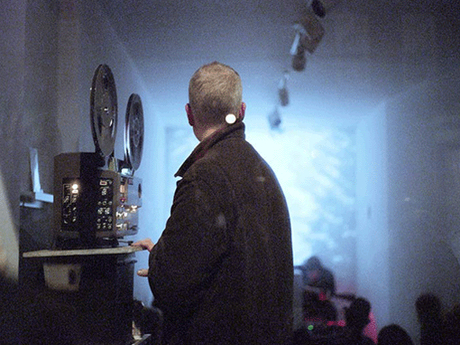
‘How can one translate the experiences offered by Paul Clipson’s films into linear writing? It can’t be impossible, for the films themselves proceed in such a direction: each one has a beginning, a middle and an end. Yet they do not work in that way exclusively—there is more at stake here than simple causality.
‘Clipson’s cinema is one of eternal recurrence. Subjects continually repeat themselves: bridges, buildings, fences, metal gratings, trains, airplanes, trees, suns, leaves, grass, eyes, hands, mouths, silhouetted figures walking on shorelines, puddles in concrete pathways, power lines, neon signage and blinking night-time lights, and water—lots of water. Beads of water on leaves, pools in puddles in concrete, waves crashing against beaches, raindrops falling on glass. These subjects are revisited again and again, sometimes to the exclusion of all else beyond their mirror-like realities. Clipson is unafraid to draw continually upon this basic set of prime subjects, which are linked in their capacity as otherworldly thresholds, their shimmering reflections and dynamic edges transforming material reality into the vibration of light. Such transformations are common to the model of cinema, which takes up the appearances of the world into a dynamic temporal flux of montage, yet Clipson’s primary concern is not alluding to the properties of cinema, but rather to the properties of perception itself. Even within a given film, the same objects reappear, passing into frame, passing out, and passing into frame again—a carousel of attractions. This structure is again repeated at the level of the shot, as the meter of Clipson’s films are set by short bursts, often no more than a few seconds at a time, with the filmstrip then rewound in camera and exposed again, rewound again and exposed again, a process that offers infinite and unending potential for iterations. Each object thus comes into visible presence in a multiple capacity, producing spaces where things are both the same and not-same: in each instance a subject is encountered freshly, made anew through the dynamic force of handheld camera movement, through the rhythm of its execution in temporal montage, and its juxtaposition with other subjects through the layering of superimpositions. Water is water, until it is suddenly melting away the hard edges of buildings and bridges, until it is a texture behind the darkened shadow of a fence, until it is crashing onshore in an explosion of particles of sunlight that sends the outline of a human figure into a vortex. Then, it is no longer mere substance—it becomes process.
‘Clipson’s films are among the clearest articulations since Brakhage of how vision is formed through process—how sight is not a passive and inert function, but equally shapes the world just as it is shaped by it. By probing the universe in its closest detail, often through a macro lens, Clipson shows us again and again how to ‘make it new’ through the act of seeing with one’s own eyes—directed at any ordinary object such as a leaf, a bead of water, a rusted bottle cap, a cigarette butt—each moment an occasion for wonder in how an object’s edges are formed, how it relates to and is produced by its environment, how it comes into and out of presence. He never appears to pre-compose the contents of his frame, choosing instead to follow the traces he finds on his journeys. In Clipson’s films, we begin to understand objects as events operating in slow motion. Things are broken down into their constituent shapes: that light is really an orb, that fence is really a grid whose negative space forms a tesseract, that puddle in the road is really a portal that leaks into another dimension. The camera is a layer of the body, a perceptual apparatus that acts in union with the surfaces of the world, as the body does. It does not separate us from what is external, but instead dissolves boundaries of internal/external by joining inner and outer realms in an act of union forged through sight. Through his lens and constant overwriting of images, Clipson reconstitutes vision in a fashion similar to the Ancient Greek concept of extramission, in which the seer beholds the world through rays that extend from the eye to the object. In this model, the viewer is bound up with the world in a tactile embrace, without the possibility of distance required to be distinct from what is observed, to be a passive spectator. This is a basic reality of quantum mechanics that a metaphysics based on the primacy of substance (a view from which the Western tradition has been built) cannot admit—yet this framework is one that process philosophy has no quarrel with whatsoever. It is a truth that our fragmented modern culture has not fully come to terms with—we live predominantly within mediated relations that promote the passive model of vision, that repress the necessity of our visual labour except through approved forms of consumption that maintain our isolation in order to sell aspects of ourselves back to us—but this truth is as old as time. As the third Mahāvākya of the Upanishads tells us, tat tvam asi—“thou art that” (or, “you’re it”). The answers are simple enough for all to see, the only thing required is to unlearn enough false ideas. …
‘All places are connected, all energy circulates. Clipson’s films give us a cosmology of pure energy; they stem from the realization that within all space is the compressed force of a thousand suns, waiting to be unlocked. In his vision of the world, matter is composed of veils that barely constrain the energy within them; objects interpenetrate one another as liquid forms whose edges are permeable. In COMPOUND EYES #1-5 (2011), a series of short films commissioned by the San Francisco Exploratorium, the possibilities of insect vision are manifested through macro images that open our eyes to the potential for the optical unconscious, which Walter Benjamin posited as among photography’s greatest asset, to wholly transcend the anthropocentric through the defamiliarzing effect of the close-up. In ANOTHER VOID (2012), we are plunged into the realm of quantum vision and the sight capacities of particles of energy. This transformation is continued in OTHER STATES (2013), where water becomes like fire, hands caressing grids of light become empty portals of blackness, forms oscillate between figure and ground as the image plane appears both utterly flat and infinitely deep, and the rising, uncanny atonality of the soundtrack by Jefre Cantu-Ledesma conjures an affective sensibility akin to a dream sequence in a horror film. This alchemical dynamic, a coincidentia oppositorum that produces a delicate balance between terror and beauty, is retained in much of Clipson’s work, which registers in its best moments a sense of the sublime from within the most familiar of landscapes.’ — Dan Browne
___
Stills

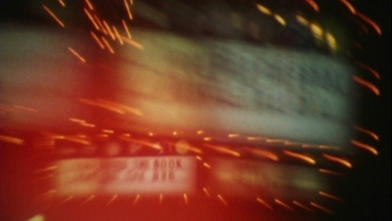


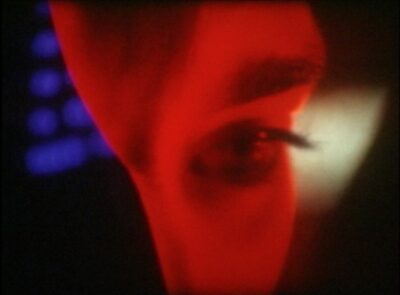
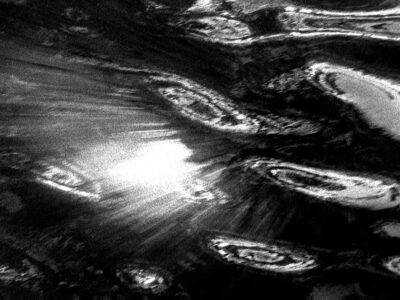
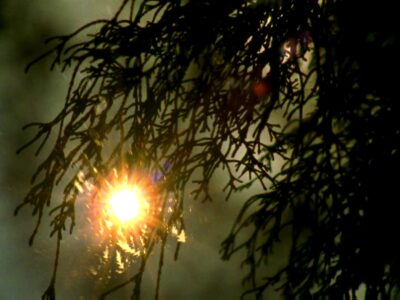
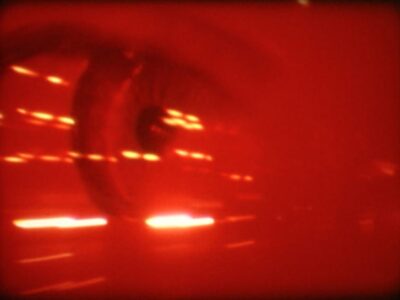
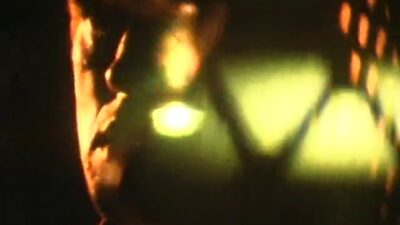
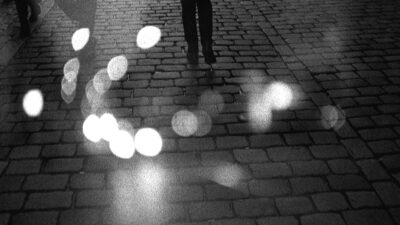
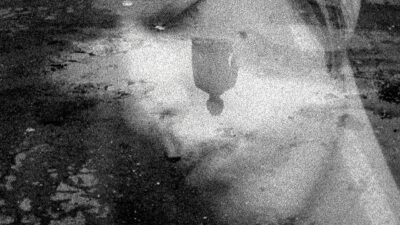

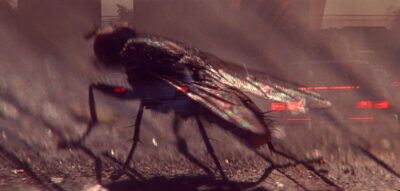
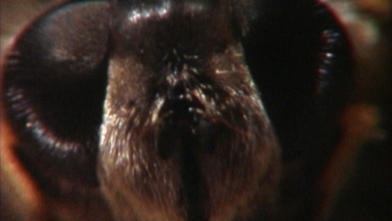





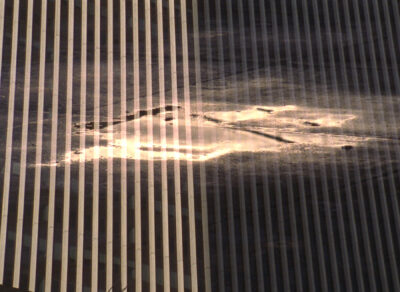


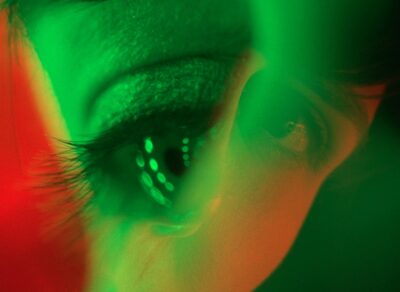





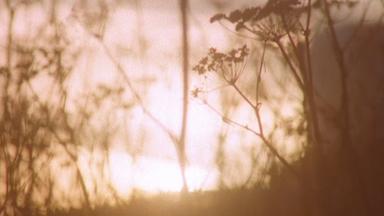










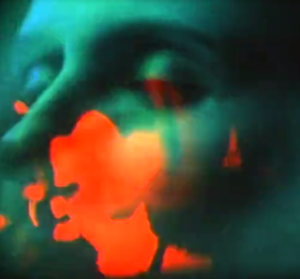

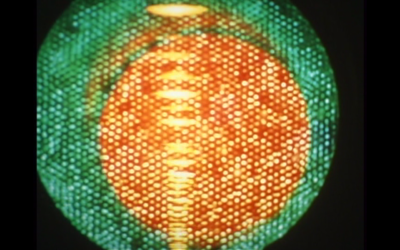




____
Further
Paul Clipson Site
Paul Clipson @ Vimeo
Cinema for the inner eye: On the films of Paul Clipson
Paul Clipson @ IMDb
Interview: Grouper and Paul Clipson Discuss ‘Hypnosis Display’
Paul Clipson @ Experimental Cinema
Forgotten Spaces: Anthony Hernandez and Paul Clipson on L.A.’s 2nd Street Tunnel
ARTIST TO ARTIST: PAUL CLIPSON & DAISY DICKINSON
A Light Change: Observing Memory Through Sound & Film
OTHER STATES: a program of films selected by Paul Clipson
Paul Clipson @ FANDOR
PAUL CLIPSON’S VISION OF CRUEL OPTIMISM
OTHER STATES: FILMS BY PAUL CLIPSON
Paul Clipson @ instagram
Interviste #4 – Paul Clipson
Sognando dai film alla musica. Due mix di Paul Clipson
HYPNOSIS DISPLAY @ Crack
______
Extras
Paul Clipson explains anamorphic film
Jefre Cantu-Ledesma & Paul Clipson live at Cafe OTO
A Light Change: When Paul Clipson Met Grouper
______
Interview
from MUBI

NOTEBOOK: How do your pictures come to be?
PAUL CLIPSON: The films happen two ways, first as live sound/film collaborations that I make with musicians, which run from 20 to 40 minutes in length or longer, and then later as short films, linked to a specific soundtrack or piece of music.
Frequent live events provide a reason to steadily generate work, to always be out filming, with or without a purpose in mind. Live collaborations with musicians create an indeterminate environment, with music acting as a social architecture into which the films are screened. They’re not definitive works, and this allows me to look at what I’ve shot with an audience without it being “finished.” This is liberating, being able to share something while not completely knowing or understanding what it is. The short films come about as a result of this experience and are crystallizations of particular sections of footage I’ve become close to, that have gravitated towards specific pieces of music I’ve later been invited to work with by musicians.
For Feeler [2016], Sarah Davachi asked me to create a film for her music, which I listened to repeatedly and drew from film rolls that I’d shot in various places and times. I treat film rolls as found footage, as they were conceived without the music in mind. During this process, I’m looking for connections between the music and my images. I found in Sarah’s music a focus on textures that suggested thoughts or memories, and this encouraged images and sequences in my work that reflected these qualities to suggest themselves. A poetic collage slowly grew together of rhyming images and environments shifting in time and space, like a stone skipping across water. None of the footage directly related or was shot with her music in mind, so there’s a resistance between the sound and image, and that tension relates back to the performances, as Sarah and I have presented work together live as well. The cuts in the films are a combination of in-camera editing with superimpositions and then actual cuts to the film. All the superimpositions and layering is done in-camera. I don’t do visual post work after the film is processed at the lab, besides editing.
NOTEBOOK: You’re a projectionist by trade but a filmmaker by calling. What draws you to celluloid?
CLIPSON: I’m drawn to the physical beauty of celluloid, to its grain, texture, tactility, its colors and tones. I find film to be the most challenging and rewarding visual form to work in. Not only celluloid but the mechanisms and optics of film cameras and projectors as well. Zoom lenses, anamorphic and wide angle lenses present all sorts of directions in which to find images. There’s a very intense, emotional charge to shooting on film where there’s rarely a moment when one’s not aware of its fragility, a sense that everything could be for nothing, and certainly the serious cost of film also remains in one’s peripheral awareness. It makes the process feel both exciting and grave. With the mechanics of the camera, whether the trigger of a Super 8mm Nikon R10 or the button of a 16mm Bolex, there’s an instantaneous elation and sense of loss every moment one’s filming that’s unique.
NOTEBOOK: Does generative work, the kind that not only finds its way into a piece but leads to more, tend to emerge from moments of inspiration or through persistent discipline?
CLIPSON: What defines inspiration is subjective. Long periods of difficult and discouraging work can yield dynamic, surprising results. Maybe the discipline comes from not depending on inspiration for work. When inspiration does happen, it’s about being prepared for it.
I once spent a day looking for a certain kind of image in San Francisco. I guess I was projecting expectations onto some area of the city where I imagined I’d find a particular light or shadow. Whether this expectation was from memory or my imagination I’m not sure but I couldn’t find it. After traversing the city for hours, I found myself at dusk on the Third Street bridge by the ballpark, when I suddenly saw a reflection in water of one of the ugliest signs in the city at the time (I think it was AT&T Park or PACBel). This sign undulating in cadmium red on the dull dark blue-green water of a canal was a hypnotic, beautiful sight after hours of frustration, and I would never have looked for it or found it without the toil that led me there.
The path may seem irrational or pointless but inspiration is everywhere. Children unwittingly employ what Debord called the dérive, where their perspective or view of a place changes by the way they play in it. This is a practice I think we all knowingly or unknowingly practice in making work.
NOTEBOOK: Your pictures present a coincidence of structural phenomena, organized by intuition. How improvised are your compositions, or vice versa?
CLIPSON: They’re hyper-composed improvisations. Improvisation is a loaded term, in that the vernacular connotation is that it’s just making shit up as you go along. If I’ve learned anything from watching friends practice music over the years, it’s that improvisation is a kind of live multi-dimensional unspooling of experience, personal philosophy, and subliminal recordings that happens in the moment of a performance. I’m trying to get at this same thing while filming, recording a live performance of wherever I am that’s filtered through layers of superimpositions, in-camera edits and camera movements, with the vague awareness that somewhere in the future, these as yet unseen images will be projected into sound and music.
NOTEBOOK: Do you believe, like Brakhage and Yeats or other artists before you, in a form of poetic dictation?
CLIPSON: Any way one wants to look at something is valid but I prefer not to name, analyze or address where these things come from. Filming is a meditation where there’s a chance for all sorts of things to come into play, all under the eye of the camera and the choices that are made while looking through it. Attenuating this meditation are material influences that suggest places to start and new directions to take. Film stocks point out subjects on which to focus and frame. The trajectory from racking wide to telephoto and back on a zoom lens, can act like shifting thoughts, or a consciousness simultaneously passing through space while not moving. Many mechanical processes used while filming help to remove the practical filters with which one normally sees, allowing unexpected ways of seeing and framing the world. It’s a form of self-effacement or disappearance into the camera’s process, a vacuum where things rush in, where associations and moments begin to appear.
_____________
26 of Paul Clipson’s 29 films
______________
Spectral Ascension (Music: Byron Westbrook, 2017)
‘Clipson’s Super 8 and 16mm films aim to bring to light visual preoccupations that reveal themselves while working in a stream of consciousness manner, combining densely layered, in-camera edited studies of figurative and abstract environments, in a process that encourages unplanned-for results, responding to and conversing with the temporal qualities of musical composition and live performance.’ — Echo Park Film Centre
_____________
Total Fiction (Music: Jeremy Young/Shinya Sugimoto, 2017)
‘Total Fiction is live score performance to a 16mm film reel projection by Paul Clipson that will change night by night in reaction to the properties of each space. Like all of Clipson’s film collage works, this will be frenetic, it will span movements both in stark black and white and bright analog color, and the score will be disbursed in a series of chapters.’ — Koncertkirken
Excerpt
_____________
Cruel Optimism (Music: Lawrence English; 2017)
‘The video was directed by Paul Clipson—the experimental filmmaker known for his sound and installation work, who’s also contributed a fair amount of visuals to Grouper’s recent work—and it leans on one of his preferred tactics to make a quasi-collage of striking images. The stark lines of a skyscraper, for example, are overlaid with similarly architectures in the natural world, like a detail of a leaf or a drop of dew. The logic is abstract, but feels drawn from the real world—in the same way a dream might dizzily refract your memories and emotions. In an email to THUMP, Clipson said he was inspired by the piece’s “expansive movement, beguiling pace and evocative sound.”
‘”While listening to Lawrence English’s music, I rediscovered images I’d filmed at different times, in different contexts and in different places,” he continued. “And under its influence, these unlikely visual juxtapositions grew into strange sequences and formed new worlds, becoming a sort of curious description of a waking dream, like trying to describe in images a forgotten tune heard long ago (and far away.)”‘ — VICE
_____________
Love’s Refrain (Music: Jefre Cantu-Ledesma, 2016)
‘Paul Clipson’s video perfectly summarizes the environmental elements available in the song, swirling deciduous and coastal locales into one disorienting fireworks display.’ — adhoc
_____________
Headache (Music: Grouper, 2016)
‘Headache is an abstract collage of light and sound, visuals that easily reflect the wild and secluded city of Astoria, Oregon where Liz Harris (Grouper) currently lives.’ — Uproxx
___________
Feeler (2016)
‘The film came directly out of listening to Sarah Davachi’s music. I find some of the sounds she works with to be very textural, almost to the point of becoming visually descriptive of surfaces, spaces, and passages of time- as if the music was the recording of a long journey. So for the film, I began to relate prior images of mine which had been filmed at different times and places around the world, to see how many visual variations could progress and accumulate along with Sarah’s sonic voyage.’ — P.C.
_____________
Lighthouse (Music: King Midas Sound/Fennesz, 2015)
‘A study of surfaces figurative and metaphysical, with various levels and planes of a city combined and superimposed to become visual echoes, suggesting an animated city surface of grids, graphs, geometries and lines: layers of subterranean streets and shadows evoking multiple levels of consciousness. Filmed in New York, San Francisco and Hong Kong. An unconscious homage to Saul Bass.’ — Northwest Film Forum
_____________
Pulsars e Quasars (2014)
‘Paul Clipson puts us on the beach, just before fall, when summer is still present—a time we have a hard time realizing is still here because we know what comes next.’ — Letterboxd
_____________
Made of Air (Music: Grouper, 2014)
‘Blissfully sentimental–bookended by two gorgeous abstractions of movement (into, and later, out of the sea/cover/light) where everything is a blur. The people stand out, because their body parts are never really abstracted, and this prominence works more than it doesn’t. It really makes me feel like I’ve been brought under some layer, emphasized by the drifting repetitions of the song. I don’t know if it’s just me, but I feel like I don’t often see this much earnest emotion in experimental filmmaking (which often feels cynical/cold/angry/distant).’ — Harrison Wade
_____________
Hypnosis Display (2014)
‘Exploring impressionistic, emotional and sensory environments found within the vast natural and urban landscapes of America. Neither image nor sound takes precedence: the two interact and combine preserving a raw sense of the discovery that field recordings and in-camera edited film rushes often yield.’ — unheimlich astarti
____________
La Paloma (Music: Austin Cesear; 2014)
‘Clipson’s trademark kaleidoscope-chromatica pairs oh so well with Cesear’s heady inverted-trance dub-techno submersion. A miniature city-symphony for true heads. An all-time favorite, hands down. Hands up too, especially on a good system. Taken from AC’s stellar West Side LP via Public Information in 2014.’ — M⁄N
_____________
Speaking Corpse (Music: Jefre Cantu-Ledesma, 2012)
‘There are moments in time, like the one Paul Clipson gives us: The city at night provides saturated palettes of color. All of these found objects cluster and converge within the duration of a series of overlapping shots, becoming new compositions, and resembling an alternative view of the everyday.’ — IndieLisboa

______________
Another Void (Music: Jefre Cantu-Ledesma, 2012)
‘Music by Jefre Cantu-Ledesma Orpheus meets the bird with the crystal plumage. Filmed in the Tenderloin night of San Francisco, this study of the eye in vertiginous color and darkness, part drip painting, part contour drawing, part cubist collage, broadens and intensifies an on-going exploration into the various in-camera processes of handheld, small gauge filmmaking in the optic field, and the rhythmic and graphic relationships of multilayered imagery to music-making and dreams. ANOTHER VOID is the result of a continuing practice of working in Super 8mm film, utilizing all of the format’s limitations and benefits to maximum effect. The process of in-camera editing, in this case, the layering of a progression of hundreds of shots over each other, at any moment up to five or six images at a time, yields an array of unexpected, collaged compositions, largely unplanned for specifically, but achieved with a particular design in mind.’ — Light Cone
Excerpt
______________
Ephemeris (Music: Aki Onda, 2011)
‘Ephemeris is a conversation of image and sound, between filmmaker Paul Clipson and electronic musician Aki Onda, rendered as if from a fragmented journey of landscapes and memories. Clipson and Onda each investigate very personal, intuitive spaces, through their favored technologies of Super 8mm film and cassette Walkman. Both artists base a significant emphasis of their work on performance environments, where their visual and sonic field recordings interact to create sensory collages born out of the subjective impressions of the audience.’ — AO
______________
Compound Eyes (Music: Jefre Cantu-Ledesma, 2011)
‘Compound Eyes shows a macro-menagerie of natural life-forms that are introduced in a forest’s tapestry of earth, water and air: spiders, slugs, flies, bees, and ants navigate their lives in darkness and light.’ — iffr
Excerpt
______________
Lightmaze (2010)
‘A hallucinatory synthesis of nightscapes, focusing on colors, textures, and forms of light, viewed and traversed in several rhythmic movements. Using multiple exposures of neon signs, traffic lights and reflections in water shot in cities such as San Francisco, New York and Amsterdam, this film study transforms urban spaces into a unique nocturnal metropolis, suggesting a timeless, euphoric experience of visual memory.’ — TiBOR Nagy
______________
Ruminant (Music: Kadet Kuhne, 2010)
‘Paul Clipson unexpectedly exchanged his court sound engineer, Jefre Cantu-Ledesm, for a promising artist named Kadet Kuhne, who presents herself in this experimental film with ambient meditation drawing on the theme in Barake from 1992. Cadet is a very interesting creature who not only makes music but audiovisual art, sculpture, photography and canvas.’ — subtitlevid
______________
Landscape Dissolves (Music: Alex Cobb, 2009)
‘This was the 1st video I watched after smoking a joint alone for the 1st time when I was 15 in 2013, and man, I tripped balls watching this.’ — ruplin99
______________
Chorus (Music: Gregg Kowalsky, 2009)
‘Three cities become one in this unblinking nocturnal collage of images and sounds in which space, color and light move through the eye of the camera to create thoughts visualized before their conception. Shot in San Francisco, New York and Rotterdam.’ — Light Cone
Excerpt
_____________
Sphinx On The Seine (Music: Jefre Cantu Ledesma; 2009)
‘SPHINX ON THE SEINE is a film poem: the beginning of a metaphysical journey, musing on a series of brief, but enigmatic images taken from around the world. These images follow one after the other, but geographically span thousands of miles and large passages of time between each cut. Notions of time, space, and memory collide within a visual fabric of abstractions, landscapes, textures, superimpositions and graphic forms, to suggest the first moments of dream-sleep.’ — TiBOR Nagy
_____________
Within Mirrors (Music: Jefre Cantu Ledesma, 2008)
‘It is not uncommon for the current generation of experimental and noise musicians to incorporate film into their performances. Oftentimes, the moving images feel arbitrarily chosen, as if selected merely to give the audience something to look at during performances in which the artists remain static. In rare instances, however, the relationship of abstract music to the film images with which it is paired is a symbiotic one, each informing and complementing the other. Such is the case on “Within Mirrors,” a DVD collection of seven short films, originally released between 2005 and 2008, by Paul Clipson featuring music by Jefre Cantu-Ledesma. The result is a stunning example of how successful a collaboration across mediums can be.’ — artblog
______________
Moth & Moon (Music: Jefre Cantu-Ledesma; 2008)
‘An experimental visual menagerie of insects, arachnids and minute arthropod life, seen through images and sounds of curiosity and contemplation. In the stillness of a pond or forest, a steady record of unknowable activity is repeated in variation.’ — MUBI
______________
Corridors (Music: Jefre Cantu Ledesma, 2007)
‘Another gorgeous and sonically blissed out tag team, Clipson’s films, again on Super-8, were shot entirely in NYC, impressionistic shots of cityscapes, rolling hills, the texture of water, sun dappled evening skies, many of the shots textural, extreme close ups, patterns as much as images and shapes, sunspots, shadows, reflections, very active, the world flying past out the window of a train, power lines and bridges slipping out of eyeshot, setting suns and colored clouds, so lovely and dreamy. Cantu-Ledesma offers up the perfect soundtrack, music culled from the same sessions that produced the huge aQ fave Shining Skull Breath, thick and dense, whirring dronescapes, textured and layered, slipping from minimal shimmer to buzzing roar and back again, very much active, the intensity and propulsion of the sounds perfectly matching the motion of the visuals, in some cases, seemingly slowing it down, the drone dragging the landscape flashing by into sudden focus before letting it go again.’ — Tibor Nagy
_______________
Constellations (Music: Jefre Cantu Ledesma; 2006)
‘dreamlike drift through a dense visual latticework of plants, chainlink fences, branches, leaves, stoplights, neon signs, a delirious series of slow motion visual tangles and patterns. A bug’s eye view of the world mysterious and wonderful, like cutting room floor super-8 plant studies and urban landscapes woven into soft focus home movies. All set to the warm glow of Ledesma’s swelling dronescapes.’ — TiBOR Nagy
_______________
Two Suns (Music: Jefre Cantu Ledesma, 2005)
‘A beautifully abstract and paranoid impression of Southern California, filmed on grainy Super8, with lots of dizzyingly hypnotic footage of telephone wires, helicopters, cityscapes, gorgeously blurred out traffic lights and tail lights and street lights. There’s late afternoon silhouettes, fuzzy smears of neon, rain drops on glass, cranes and docks, abstract streaks of passing cars and slick roadways, hillsides covered in windmills, the sun reflected on the sea, highways and green hills. So lovely. And haunting. As are the accompanying sounds created, an ominous, buzzing, vocal drone, affected to the point that it still sounds organic, but not like a voice, more like streaks of sound, greys and blacks and browns, all smeared into blurred soundscapes of purr and whir and thrum, that perfectly compliment the shaky camera work, the grainy film stock, and the gorgeously and ominously mundane subject matter.’ — Tibor Nagy
_______________
Black Sun Square (Music: Tarentel, 2004)
‘An expressionistic view of fear within the spinning zoetrope of an industrial labyrinth.’ — Oddball Films
Excerpt
*
p.s. Hey. ** Uday, Hey. When I was a kid and the nuclear bomb was supposedly going to be dropped any minute, my parents turned one of the rooms in our basement into a very half-assed supposed bomb shelter, and I kept telling them, we’re going to die in there, but they were too cheapskate to do it right, so I had a few terrified years there. There’s a nice Facebook group called ‘Clouds That Don’t Look Like Anything Else’ where people post cloud pix that they think don’t bring any imagery to mind, but they always do. Oh, we should meet sometime, yes. Paris is great, come. Poor you with your ill-fated sleep length. If I get less than eight, I’m a wreck. Hope you’re alright and your class whizzed by. ** Arno, Hi. The o.o.p. thing is really frustrating, especially since most of the books I love are considered too niche/experimental to be worth revivifying, but, with print on demand, that just seems like bullshit. Excellent about your publisher. My French publisher, Editions POL, is like that. They’re a serious writer’s dream come true. Yes, I blurbed the American edition of ‘Babyfucker’. It’s great, yeah. I did a post about it. Let me see if I can find it. Hold on. Here. ‘I’m a big fan of writing that isn’t afraid of its own imagination or the consequences of what it dreams or talks up’: words taken directly out of my own mouth. Yes! I absolutely love your pre-set structural ideas. I almost always do the same thing. The George Miles Cycle took me about 20 years to figure out the right pre-set before I could write it. I like Stewart Home too. I actually like Pasolini’s poems more than his films. Anyway, your description of your process is very exciting. I’m a process junkie when it comes to fiction, as long as the process is complicated enough like yours. Like minds, I think. Yeah, I grew up in the bomb shelter-happy days in the ’60s, and even me as a little kid knew a bomb shelter would just bury people alive, but adults didn’t for some reason. I figure the world will end very, very gradually in fact. ** Dominik, Hi!!! A number of families in the neighborhood where I grew up built bomb shelters in their backyards, and they were depressing as hell to be inside, and they smelled terrible. The ‘Room Temperature’ ghost is being a total pain the ass. Or, well, our lofty plans for it are the pain, I guess. It’ll be fine, but the whole film is basically finished but for its polishing except for Mr. Ghost who is still driving us a little crazy with its demands. Once you’re a tax expert, I’m going to need your help. Love inventing the bottomless toothpaste tube and putting it on sale in every store or at least the ones near me, G. ** _Black_Acrylic, Hey. Me, I think the bomb shelter as saviour thing is a scam. It’s like the Easter Bunny. Yes! I read about Willy’s Chocolate Experience last night! I was so excited! You can easily imagine! ** Jack Skelley, Jackie: ‘Oppenheimer’ is going to win Best Picture. I predict (not hard to do). Yet another reason not to watch it. Well, so …how was FOKA Comes Alive? How is it? How is it going? *cocks ear* ** Misanthrope, I’m like your own personal Roberta Flack. They smell funky. Bomb shelters. Or the supposed ‘safe’ ones do. Or they used to. If someone wrote a novel called ‘Choicelessness’, I would definitely not read it. Unless that was the English translation of a foreign novel’s title, in which case I could give it the benefit of the doubt. ** Charalampos, I haven’t listened to the song yet, but I will. I like ‘Narrow Rooms’, yes. It’s not as good as ‘EC’ in my opinion though. I have very strong instinct that I will never learn French. Or not in a useable way. But oh well. Happy non-film goings on from you know where. ** Justin, I never read kindle books. Should I? Probably. I only seem to read physical books or pdfs. I’m glad ‘Blow Up’ snuck through. At least when I was a kid, bomb shelters were really, really oppressive and claustrophobic no matter what people did to their insides. But everything’s changed. Newness is the key to life or something. Nostalgia is the enemy. So thinks me. ** Guy, Hi. No, I think bomb shelters would be absolutely useless against the world’s demise. They would just add more torture to your death. Wait, I sent you ‘Dreamt Up’, okay, that does ring a bell. Sorry, my brain is very toasted these days. A few weeks! Whoo-hoo! I’ve always assumed that mental fragility and slave identity would be pretty wedded together, just ideally in a hot way. I don’t want to learn Japanese, but I really want to go to Japan. Zac and I made a vow to go this fall. No, I never want to be people I admire. I think that’s weird of me, but I don’t. I think I like feeling lesser around certain people. The mornings here involve drinking coffee and doing the p.s., which I suppose does have a certain gorgeousness. I suspect (and hope) your mornings are a bit more traditionally gorgeous. ** Steve Erickson, Ah, relatively simple solution. Vegan eating is pretty stellar for the old bod. If you can get into vegan cheese, that helps keep one on track, I think. So, why on earth are you reading George Santos’s biography? I can’t quite figure out that desire. I did watch a couple of episodes of ‘Doomsday Preppers’, and it was pretty fascinating. Not as fascinating as ‘Hoarders’, but what could be. ** Right. Today the blog devotes itself to the late and very wonderful filmmaker Paul Clipson. See if you’re in the mood and then dig in, if so, or so I recommend. See you tomorrow.




 Now available in North America
Now available in North America 
Hi!!
I suspect my tender feelings for bomb shelters are greatly influenced by the fact that I’ve never actually been in or even seen one in real life.
Yeah, that’s what I thought. I mean, it does sound like your ghost isn’t the easiest person (entity…?) to get along with. Fingers crossed for joining the same wavelength soon!
Well, it’s safe to say I’m still not a tax expert, haha.
A bottomless toothpaste tube would definitely come in handy! Love lying down for a “power nap” and waking up with an impressive puddle of saliva under his head, Od.
Dennis, Hahaha, but my other choice would be to not keep on keeping on and I’m not choosing that.
I think I told you I had a good friend who was once Pat Nixon’s press secretary for a couple years. She said they did a drill every year in which they’d all get into armored vehicles and go out of DC through tunnels to the huge bomb shelter in the mountains of West Virginia. She said it was dank and smelly, as if no one ever kept it up. But it was safe.
Cool to think of all the tunnels under the White House and DC in general. They can sneak out anytime they want. Or hide. 😀
I enjoyed the Paul Clipson material shown today. Having music play such a prominent role seems like a good approach. Interesting that MUBI are showing his stuff, maybe I should subscribe to one of these services.
The Odeon is the cinema near me, and they are not showing the Zone of Interest owing to a dispute with the film’s distributor. Meanwhile, I’m refusing to go see Poor Things because of its refusal to acknowledge Glasgow as its proper setting. The cinematic world is a complicated place!
Hi Dennis! I like the Laika movies too, especially ‘Coraline’. I don’t watch stop-motion too often but I think ‘Red Tea and Blood String’ and ‘The Wolf House’ are great. As for outside the animation field, I’m very interested in the old American Horror B-Movies, like ‘Island of the Lost Souls’, ‘I Walked With a Zombie’, ‘Cat People’, and ‘The Leopard Man’. What do you think about those?
Also, I’m a great fan of Catherine Breillat like you. I’ve already watched most of her films, ‘Brief Crossing’ is my favourite but I also love ‘Last Summer’ and ‘Fat Girl’. Have you watched ‘Demonlover’ by Olivier Assayas? Probably my all-time favourite from the New French Extremity.
Man, I really should check out some of Paul Clipson’s work… I keep meaning to, but I forget… I guess this post is a sign for me to start this weekend! I’m always looking for new things to watch and read 🙂
I know you’re into GbV and punk in general, as I am (yay), but do you like folksy stuff at all? I’ve been listening to this artist Gregory & The Hawk for ages and wanted to share this song that was playing just now: https://youtu.be/_yB4LmZy81o?si=9vhj3q_iNCjDNZOI
Hope all’s well on your end!!
Great to see the Paul Clipson survey today. You might recall I’m a fan. There was supposed to be a Clipson tribute live audiovisual event a week ago, but it got cancelled because of Gaza protests at the venue.
I’m old enough to remember when bomb shelters were a thing. With the shitty state of the world these days, maybe they’ll become a thing again, sadly.
I’m reading the new Kelly Link novel. 600+ pages! It started out very YA, but has gotten more varied, thankfully. Hopefully this trend will continue.
Bill
For more experimental fillms, Ray Cathode’s YouTube channel has been very active today, posting 10 George Kuchar shorts. They’ve put up some Warhol-directed/produced movies (including Vincent Fremont’s FIGHT, which was new to me) and UK TV anthologies of avant-garde shorts. The link’s here: https://www.youtube.com/@raycathode/videos
Santos approached his life as though he were an actor living out a fictional character, lying about even the most insignificant details, and I find that fascinating enough to want to read a biography.
I’m so excited for you & Zac to travel to Japan!!! When was the last time you went there? J & I were also thinking of going for three weeks in September, but the tickets are really expensive from this shitty country… It’s much cheaper from Italy, and perhaps France? Ha! I remember reading in some of your books that when a slavish twink loses his mind, the master/ narrator/ etc finds this extremely hot. Think it was in the Sluts? Sadly, I’m a bit weirded out by my slave’s mental health and possible drug use… Yes, his intensity is extremely sexy, but at one point he literally wailed at me about his high school crush (another high school boy) ghosting him about twenty years ago… I just don’t know how to deal with people’s mental health eruptions cause I’m not a certified nurse… The other thing is, I worry I might be triggering these people for some reason… So, it scares me a bit when people go there in front of me. I’m sure you’re a far better Master than I can ever be… Today, I finished the beginner course of my sword class, and I managed to confidently speak to my hot instructor about swords and the book he recommended on the subject. He took off his shirt as we were speaking… I noticed his torso isn’t actually as toned as his thighs, but I’m still very excited by him. I had a feeling he was checking me out too, but could be wishful thinking…! My mornings usually involve checking your blog too… Hope your head is feeling less toasted today! xo
hi dennis! i’m a little sad i missed bomb shelter day, but i’ve been downright bedridden with migraines for the past few days and i forgot to even check your response 🙁 i used to browse doomsday prepper forums a year or so ago (though I had to stop because it set off some rather unpleasant parts of my brain. the downright militant christian fundametalism i saw around didn’t help), and i remember this one guy had this cold war bunker that he kept properly stocked.
bed creaking! it doesn’t creak as bad as my old bed, but I had to bolt it to the wall because it’d wobble whenever i got into it. the ladder’s in a super weird spot, too, so i’ve ended up sleeping in a completely different position to the way I’m used to. it still feels a little like I’m sleeping upside down, but that’ll probably fade with time. 🤷🏾
oh!!!! literally just came to me as i was about to press post, did you ever check out ezra blake’s stuff? if so, what were your thoughts?
shooting that eternal godspeed your way with a rocket launcher!
Migraines are horrible. Rest well, I feel you bud!!
Hi, Dennis! Kindle books aren’t bad, but nothing beats a physical book. Nostalgia’s not all bad, though. It has this amazing ability to sort of rewrite history or make sub-par things seem better than they really are. I watched Poor Things last night. A total feast for the eyes. Hope the work on your film’s ghost is taking shape in the way you want.
Ooh someone mentioned migraines and now I’m thinking about migraines. Speaking of migraines, I’m leaving my moms and going back to my apartment/ the rehab program tomorrow. She claimed to have pulled me out but I called the insurance and I truly wasn’t. That’s what I figured initially, but I didn’t want to escalate the situation.
Also I picked up the testosterone from my pharmacy today. It comes in a cute little 200mg vial. I should be happy I think but nothing makes me happy from all this stress.
Positivity and motivation become so hard when it feels like your picking up after the filth and destruction of your own shadow, or idk, kind of feels like someone wears your skin and becomes the more disordered lazy version. I have a fear what if that skin permanently takes over? Oooh, ya know I think that would make a cool story prompt though!
Im editing my book around page 151, the 3rd part, and in total I’m hoping it doesn’t exceed 250 pages. I think I’m good though, as there’s things I want to finesse and cut down on, structure-wise.
I had this sobbing breakdown yesterday and today because all this fucking stuff that I should already have done like my license and finishing this novel, traveling etc. Its funny because I just lay on the floor and cry like really awkwardly and then the cats come over and dig their faces into me all confused.
I think the cats made the stay bearable. Frankie is really fat, like, idk she’s always been very saggy, but she’s warm in the winter and loves to sleep with me cuz I’m her favorite ever since I was…13? Maybe 12 idk but about 7 years.
see ya later alligator!
I’m going to be very honest, I’ve never understood nuclear disaster survivalists. I feel like at that point I’d just let go. I’d love to come to Paris if I had the requisite documents/funds! I can *maybe* do next winter but that’s a while away. Class went by ok but I fell on my already injured hand and also shattered my phone so I spent the afternoon picking glass out of my hands instead of napping. Very annoying. Beginning to feel like Wil E Coyote.